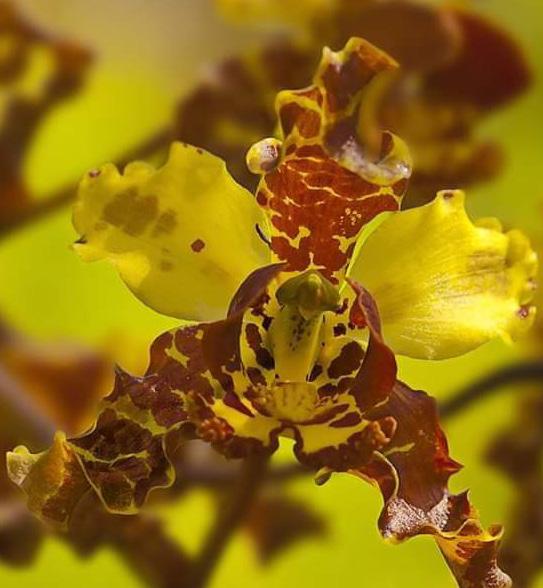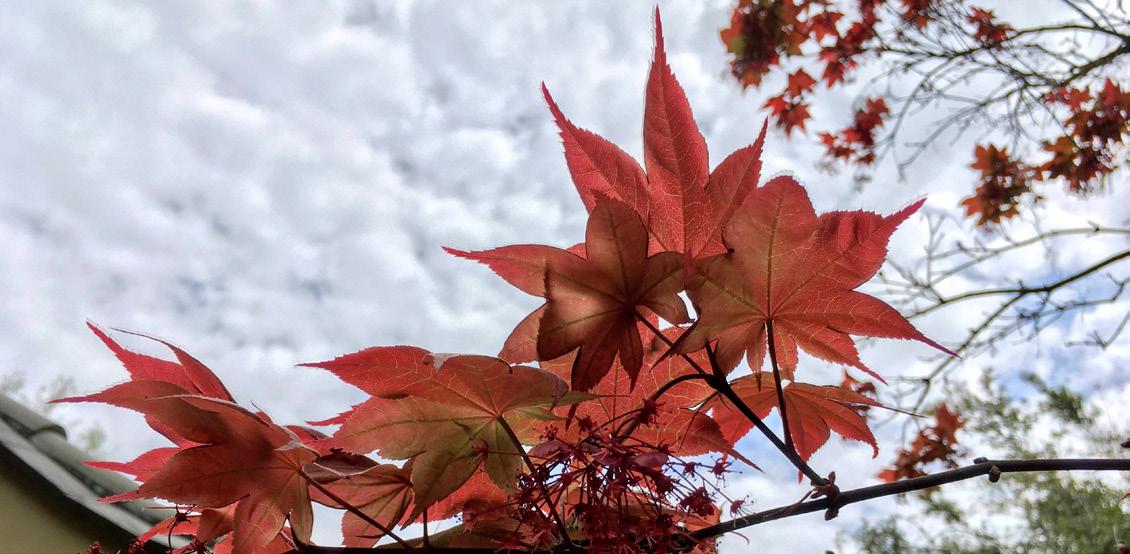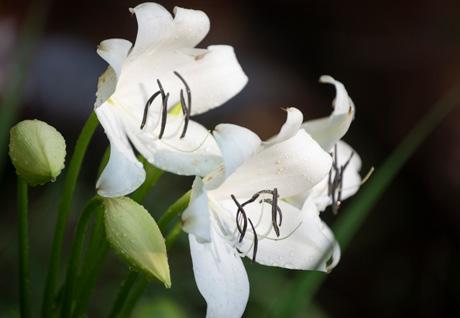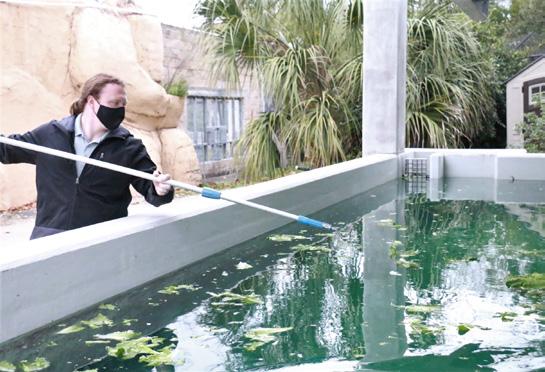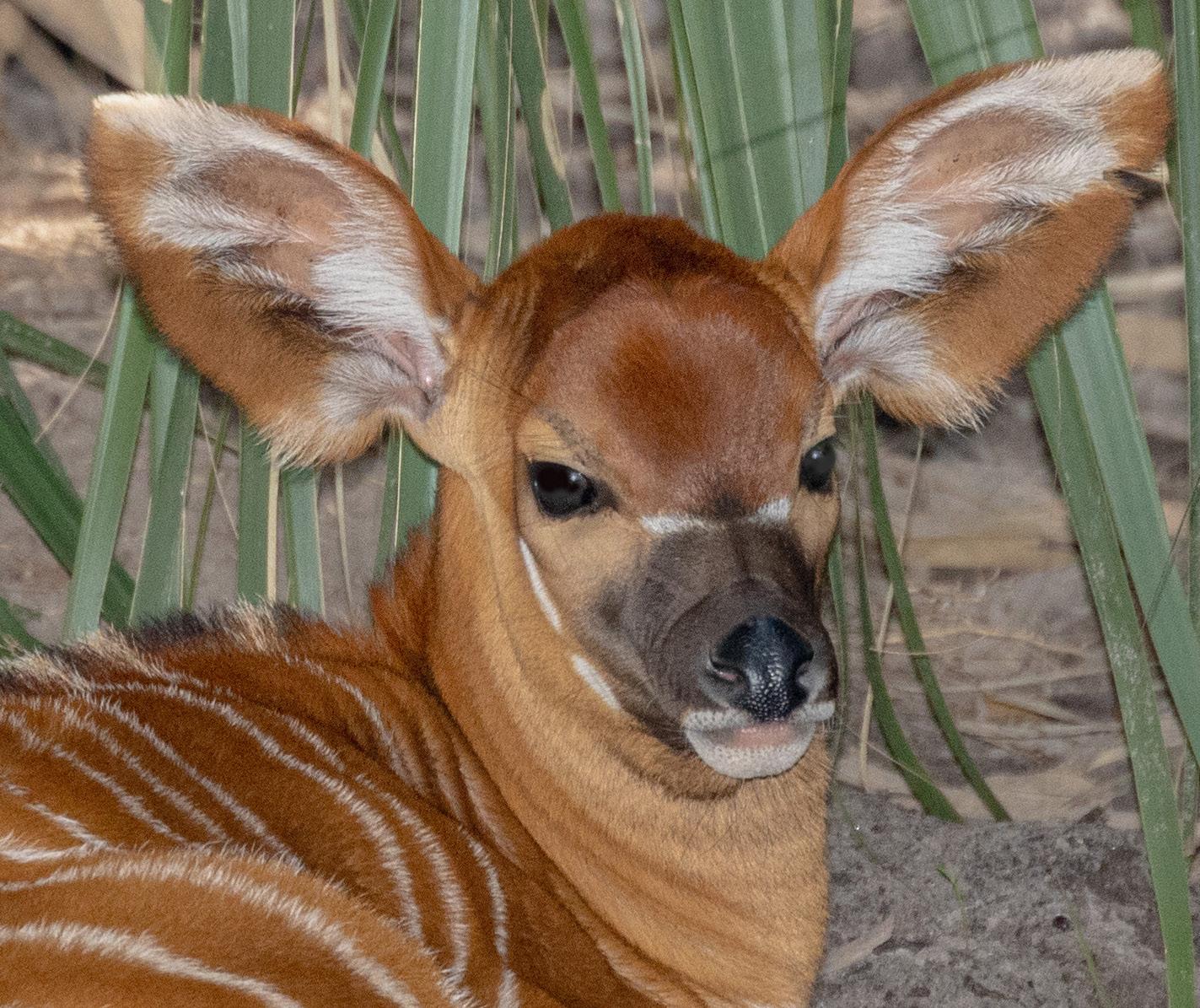
2 minute read
Living Art
ANIMAL PROGRAMS Living Art
By Donna Bear, Curator of Species Management
Advertisement
Green and Black Poison Dart Frog located in Range of the Jaguar. Photo: Cayle Pearson, Assistant Curator of Herps, Birds, and Others
Throughout nature insects, fish, birds, reptiles, and mammals, living art is represented by numerous species in an amazing fashion. The colors and patterns of a creature’s fur, feathers, and scales can represent any color in the rainbow—whether it is vibrant, or soft and muted. Art is not only about what is pleasing to the eye, but frequently there is a purpose for the hues and designs adorning animals.
Various species utilize appearance adaptations. Scales, fur, or feathers, serve as camouflage for many creatures, blending them into their surroundings to hide them from predators or keep them from detection while awaiting their prey. Grevy’s zebra, for example, capitalize on their disruptive coloration. Sporting their contrasting striping, when they stand close to other zebras, it can confuse a would-be predator, making it difficult for the hunter to determine the outline of an individual.
Atlantic stingrays self-decorate, burying in the sand appearing to become one with the ocean floor. The Henkel’s leaf-tailed gecko uses color matching and mimicry, with a tail that looks like foliage to blend in with branches and leaf litter and seems to disappear into its surroundings.
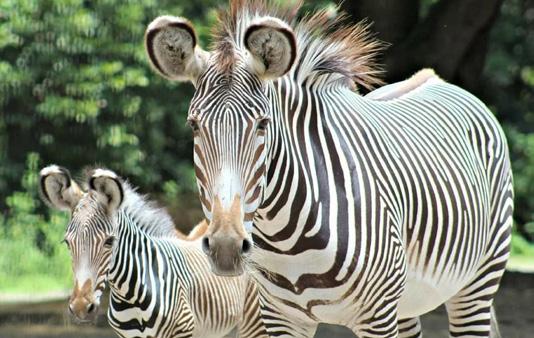
Grevy's Zebra. Photo: Kori Odum, Mammal Keeper
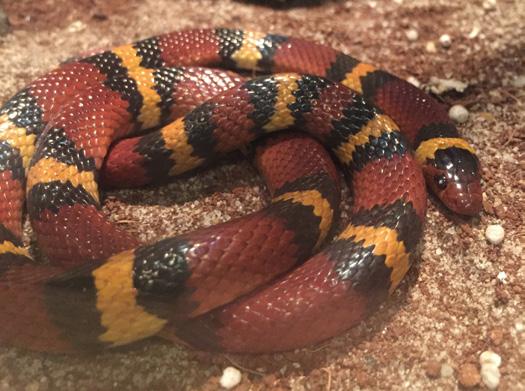
Scarlet King Snake located in Wild Florida. Photo: Emily Fyfe, Senior Herpetology Keeper
Mimicry, which means appearing to be something you are not, can allow an otherwise harmless animal like the scarlet kingsnake to imitate the venomous coral snake, deterring any would-be predators. Bright coloring can be a warning indicating to other animals that something is venomous, like the coral snake, or poisonous to eat, like the many different brightly colored poison dart frogs.
In addition to protection from predators or hiding to capture prey, an animal’s brilliant shades and ornate patterns can attract a mate. During breeding season, some male birds become more vibrant to improve their odds of being chosen by a female. The male hooded merganser’s more subtle courtship behaviors include preening and wing flapping to display his impressive plumage, a remarkable combination of snow white, black, and chestnut markings. He will also shake his head to get attention and to show off his beautiful fanshaped white oval crest bordered by black, his striking yellow eyes, and black beak.
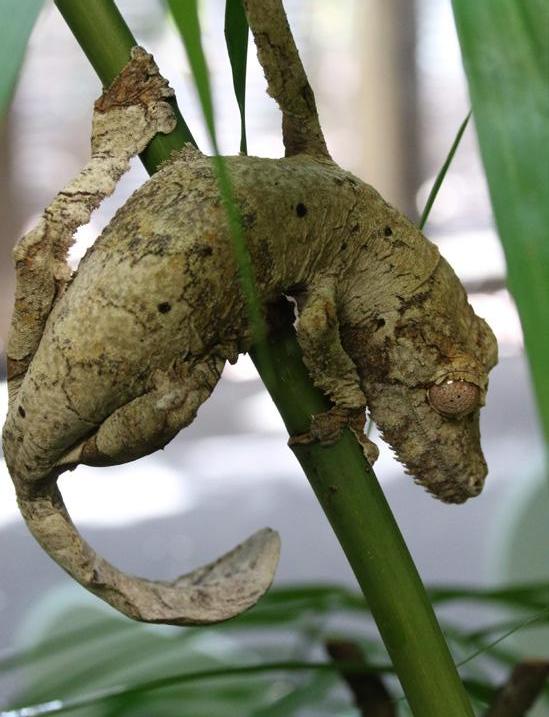
Henkel's Leaf-tailed Gecko located in the Africa Loop. Photo Cayle Pearson Assistant Curator of Herps, Birds, and Others Hooded Merganser located in the Emerald Forest Aviary in Range of the Jaguar. Photo: Samantha Clay, HBO Keeper Assistant
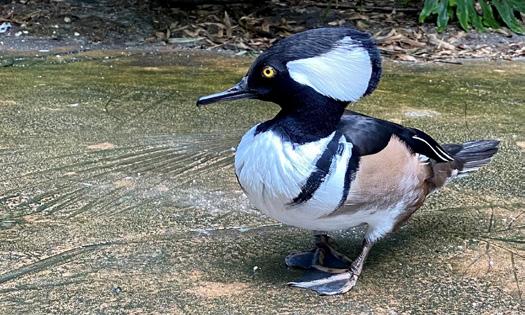
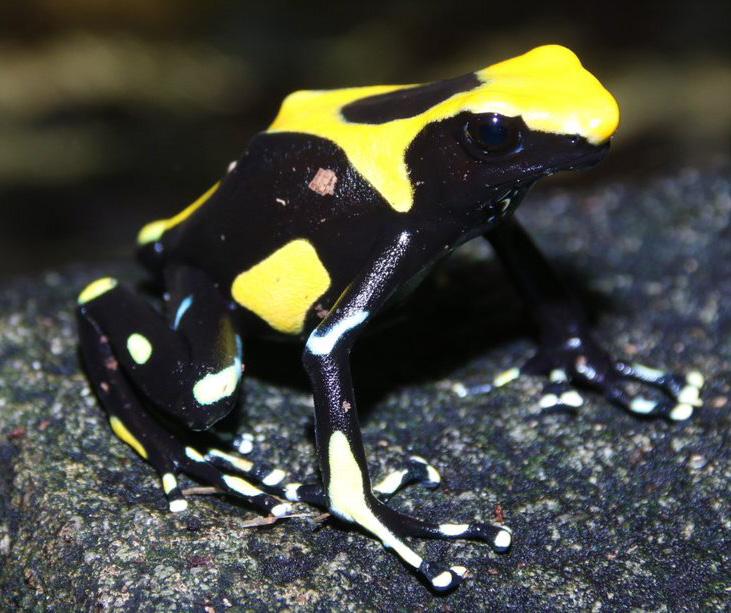
Yellow and Blue Poison Dart frog located in Range of the Jaguar. Photo Cayle Pearson Assistant Curator of Herps, Birds, and Others
Next time, as you are walking through the Zoo and observing wildlife, consider the astonishing ways our animal counterparts use their appearance to survive. Whether hunting for food or trying to avoid being food, animals utilize coloration, camouflage, mimicry, and other incredible strategies to stay alive and thrive.


